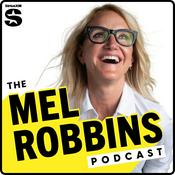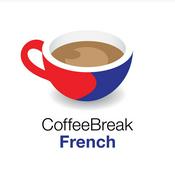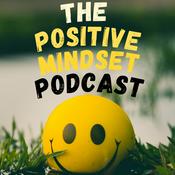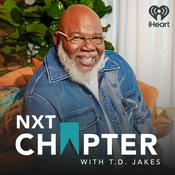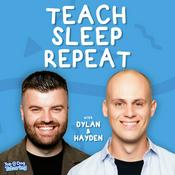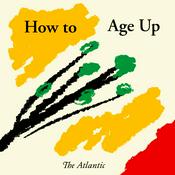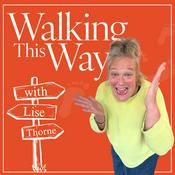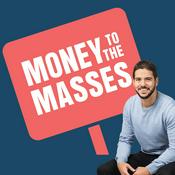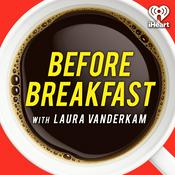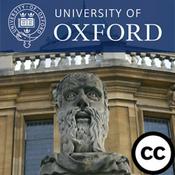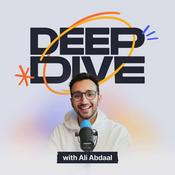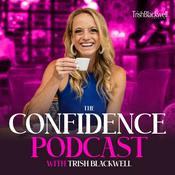183 episodes
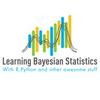
#148 Adaptive Trials, Bayesian Thinking, and Learning from Data, with Scott Berry
30/12/2025 | 1h 24 mins.
• Support & get perks!• Proudly sponsored by PyMC Labs. Get in touch and tell them you come from LBS!• Intro to Bayes and Advanced Regression courses (first 2 lessons free)Our theme music is « Good Bayesian », by Baba Brinkman (feat MC Lars and Mega Ran). Check out his awesome work !Chapters:13:16 Understanding Adaptive and Platform Trials25:25 Real-World Applications and Innovations in Trials34:11 Challenges in Implementing Bayesian Adaptive Trials42:09 The Birth of a Simulation Tool44:10 The Importance of Simulated Data48:36 Lessons from High-Stakes Trials52:53 Navigating Adaptive Trial Designs56:55 Communicating Complexity to Stakeholders01:02:29 The Future of Clinical Trials01:10:24 Skills for the Next Generation of StatisticiansThank you to my Patrons for making this episode possible!Yusuke Saito, Avi Bryant, Giuliano Cruz, Tradd Salvo, William Benton, James Ahloy, Robin Taylor,, Chad Scherrer, Zwelithini Tunyiswa, Bertrand Wilden, James Thompson, Stephen Oates, Gian Luca Di Tanna, Jack Wells, Matthew Maldonado, Ian Costley, Ally Salim, Larry Gill, Ian Moran, Paul Oreto, Colin Caprani, Colin Carroll, Nathaniel Burbank, Michael Osthege, Rémi Louf, Clive Edelsten, Henri Wallen, Hugo Botha, Vinh Nguyen, Marcin Elantkowski, Adam C. Smith, Will Kurt, Andrew Moskowitz, Hector Munoz, Marco Gorelli, Simon Kessell, Bradley Rode, Patrick Kelley, Rick Anderson, Casper de Bruin, Michael Hankin, Cameron Smith, Tomáš Frýda, Ryan Wesslen, Andreas Netti, Riley King, Yoshiyuki Hamajima, Sven De Maeyer, Michael DeCrescenzo, Fergal M, Mason Yahr, Naoya Kanai, Aubrey Clayton, Omri Har Shemesh, Scott Anthony Robson, Robert Yolken, Or Duek, Pavel Dusek, Paul Cox, Andreas Kröpelin, Raphaël R, Nicolas Rode, Gabriel Stechschulte, Arkady, Kurt TeKolste, Marcus Nölke, Maggi Mackintosh, Grant Pezzolesi, Joshua Meehl, Javier Sabio, Kristian Higgins, Matt Rosinski, Luis Fonseca, Dante Gates, Matt Niccolls, Maksim Kuznecov, Michael Thomas, Luke Gorrie, Cory Kiser, Julio, Edvin Saveljev, Frederick Ayala, Jeffrey Powell, Gal Kampel, Adan Romero, Blake Walters, Jonathan Morgan, Francesco Madrisotti, Ivy Huang, Gary Clarke, Robert Flannery, Rasmus Hindström, Stefan, Corey Abshire, Mike Loncaric, Ronald Legere, Sergio Dolia, Michael Cao, Yiğit Aşık, Suyog Chandramouli, Guillaume Berthon, Avenicio Baca, Spencer Boucher, Krzysztof Lechowski, Danimal, Jácint Juhász, Sander and Philippe.Links from the show:Berry ConsultantsScott's podcastLBS #45 Biostats & Clinical Trial Design, with Frank Harrell

BITESIZE | Making Variational Inference Reliable: From ADVI to DADVI
17/12/2025 | 21 mins.
Today’s clip is from episode 147 of the podcast, with Martin Ingram.Alex and Martin discuss the intricacies of variational inference, particularly focusing on the ADVI method and its challenges. They explore the evolution of approximate inference methods, the significance of mean field variational inference, and the innovative linear response technique for covariance estimation. The discussion also delves into the trade-offs between stochastic and deterministic optimization techniques, providing insights into their implications for Bayesian statistics.Get the full discussion here.Intro to Bayes Course (first 2 lessons free)Advanced Regression Course (first 2 lessons free)Our theme music is « Good Bayesian », by Baba Brinkman (feat MC Lars and Mega Ran). Check out his awesome work!Visit our Patreon page to unlock exclusive Bayesian swag ;)TranscriptThis is an automatic transcript and may therefore contain errors. Please get in touch if you're willing to correct them.

#147 Fast Approximate Inference without Convergence Worries, with Martin Ingram
12/12/2025 | 1h 9 mins.
Proudly sponsored by PyMC Labs, the Bayesian Consultancy. Book a call, or get in touch!Intro to Bayes Course (first 2 lessons free)Advanced Regression Course (first 2 lessons free)Our theme music is « Good Bayesian », by Baba Brinkman (feat MC Lars and Mega Ran). Check out his awesome work!Visit our Patreon page to unlock exclusive Bayesian swag ;)Takeaways:DADVI is a new approach to variational inference that aims to improve speed and accuracy.DADVI allows for faster Bayesian inference without sacrificing model flexibility.Linear response can help recover covariance estimates from mean estimates.DADVI performs well in mixed models and hierarchical structures.Normalizing flows present an interesting avenue for enhancing variational inference.DADVI can handle large datasets effectively, improving predictive performance.Future enhancements for DADVI may include GPU support and linear response integration.Chapters:13:17 Understanding DADVI: A New Approach21:54 Mean Field Variational Inference Explained26:38 Linear Response and Covariance Estimation31:21 Deterministic vs Stochastic Optimization in DADVI35:00 Understanding DADVI and Its Optimization Landscape37:59 Theoretical Insights and Practical Applications of DADVI42:12 Comparative Performance of DADVI in Real Applications45:03 Challenges and Effectiveness of DADVI in Various Models48:51 Exploring Future Directions for Variational Inference53:04 Final Thoughts and Advice for PractitionersThank you to my Patrons for making this episode possible!Yusuke Saito, Avi Bryant, Giuliano Cruz, James Wade, Tradd Salvo, William Benton, James Ahloy, Robin Taylor, Chad Scherrer, Zwelithini Tunyiswa, Bertrand Wilden, James Thompson, Stephen Oates, Gian Luca Di Tanna, Jack Wells, Matthew Maldonado, Ian Costley, Ally Salim, Larry Gill, Ian Moran, Paul Oreto, Colin Caprani, Colin Carroll, Nathaniel Burbank, Michael Osthege, Rémi Louf, Clive Edelsten, Henri Wallen, Hugo Botha, Vinh Nguyen, Marcin Elantkowski, Adam C. Smith, Will Kurt, Andrew Moskowitz, Hector Munoz, Marco Gorelli, Simon Kessell, Bradley Rode, Patrick Kelley, Rick Anderson, Casper de Bruin, Michael Hankin, Cameron Smith, Tomáš Frýda, Ryan Wesslen, Andreas Netti, Riley King, Yoshiyuki Hamajima, Sven De Maeyer, Michael DeCrescenzo, Fergal M, Mason Yahr, Naoya Kanai, Aubrey Clayton, Omri Har Shemesh, Scott Anthony Robson, Robert Yolken, Or Duek, Pavel Dusek, Paul Cox, Andreas Kröpelin, Raphaël...

BITESIZE | Why Bayesian Stats Matter When the Physics Gets Extreme
05/12/2025 | 19 mins.
Today’s clip is from episode 146 of the podcast, with Ethan Smith.Alex and Ethan discuss the application of Bayesian inference in high energy density physics, particularly in analyzing complex data sets. They highlight the advantages of Bayesian techniques, such as incorporating prior knowledge and managing uncertainties. They also shares insights from an ongoing experimental project focused on measuring the equation of state of plasma at extreme pressures. Finally, Alex and Ethan advocate for best practices in managing large codebases and ensuring model reliability.Get the full discussion here.Intro to Bayes Course (first 2 lessons free)Advanced Regression Course (first 2 lessons free)Our theme music is « Good Bayesian », by Baba Brinkman (feat MC Lars and Mega Ran). Check out his awesome work!Visit our Patreon page to unlock exclusive Bayesian swag ;)TranscriptThis is an automatic transcript and may therefore contain errors. Please get in touch if you're willing to correct them.

#146 Lasers, Planets, and Bayesian Inference, with Ethan Smith
27/11/2025 | 1h 35 mins.
Proudly sponsored by PyMC Labs, the Bayesian Consultancy. Book a call, or get in touch!Intro to Bayes Course (first 2 lessons free)Advanced Regression Course (first 2 lessons free)Our theme music is « Good Bayesian », by Baba Brinkman (feat MC Lars and Mega Ran). Check out his awesome work!Visit our Patreon page to unlock exclusive Bayesian swag ;)Takeaways:Ethan's research involves using lasers to compress matter to extreme conditions to study astrophysical phenomena.Bayesian inference is a key tool in analyzing complex data from high energy density experiments.The future of high energy density physics lies in developing new diagnostic technologies and increasing experimental scale.High energy density physics can provide insights into planetary science and astrophysics.Emerging technologies in diagnostics are set to revolutionize the field.Ethan's dream project involves exploring picno nuclear fusion.Chapters:14:31 Understanding High Energy Density Physics and Plasma Spectroscopy21:24 Challenges in Data Analysis and Experimentation36:11 The Role of Bayesian Inference in High Energy Density Physics47:17 Transitioning to Advanced Sampling Techniques51:35 Best Practices in Model Development55:30 Evaluating Model Performance01:02:10 The Role of High Energy Density Physics01:11:15 Innovations in Diagnostic Technologies01:22:51 Future Directions in Experimental Physics01:26:08 Advice for Aspiring ScientistsThank you to my Patrons for making this episode possible!Yusuke Saito, Avi Bryant, Giuliano Cruz, James Wade, Tradd Salvo, William Benton, James Ahloy, Robin Taylor, Chad Scherrer, Zwelithini Tunyiswa, Bertrand Wilden, James Thompson, Stephen Oates, Gian Luca Di Tanna, Jack Wells, Matthew Maldonado, Ian Costley, Ally Salim, Larry Gill, Ian Moran, Paul Oreto, Colin Caprani, Colin Carroll, Nathaniel Burbank, Michael Osthege, Rémi Louf, Clive Edelsten, Henri Wallen, Hugo Botha, Vinh Nguyen, Marcin Elantkowski, Adam C. Smith, Will Kurt, Andrew Moskowitz, Hector Munoz, Marco Gorelli, Simon Kessell, Bradley Rode, Patrick Kelley, Rick Anderson, Casper de Bruin, Michael Hankin, Cameron Smith, Tomáš Frýda, Ryan Wesslen, Andreas Netti, Riley King, Yoshiyuki Hamajima, Sven De Maeyer, Michael DeCrescenzo, Fergal M, Mason Yahr, Naoya Kanai, Aubrey Clayton, Omri Har Shemesh, Scott Anthony Robson, Robert Yolken, Or Duek, Pavel Dusek, Paul Cox, Andreas Kröpelin, Raphaël R, Nicolas Rode, Gabriel Stechschulte, Arkady,
More Education podcasts
Trending Education podcasts
About Learning Bayesian Statistics
Listen to Learning Bayesian Statistics, The Mel Robbins Podcast and many other podcasts from around the world with the radio.net app

Get the free radio.net app
- Stations and podcasts to bookmark
- Stream via Wi-Fi or Bluetooth
- Supports Carplay & Android Auto
- Many other app features
Get the free radio.net app
- Stations and podcasts to bookmark
- Stream via Wi-Fi or Bluetooth
- Supports Carplay & Android Auto
- Many other app features


Learning Bayesian Statistics
download the app,
start listening.
